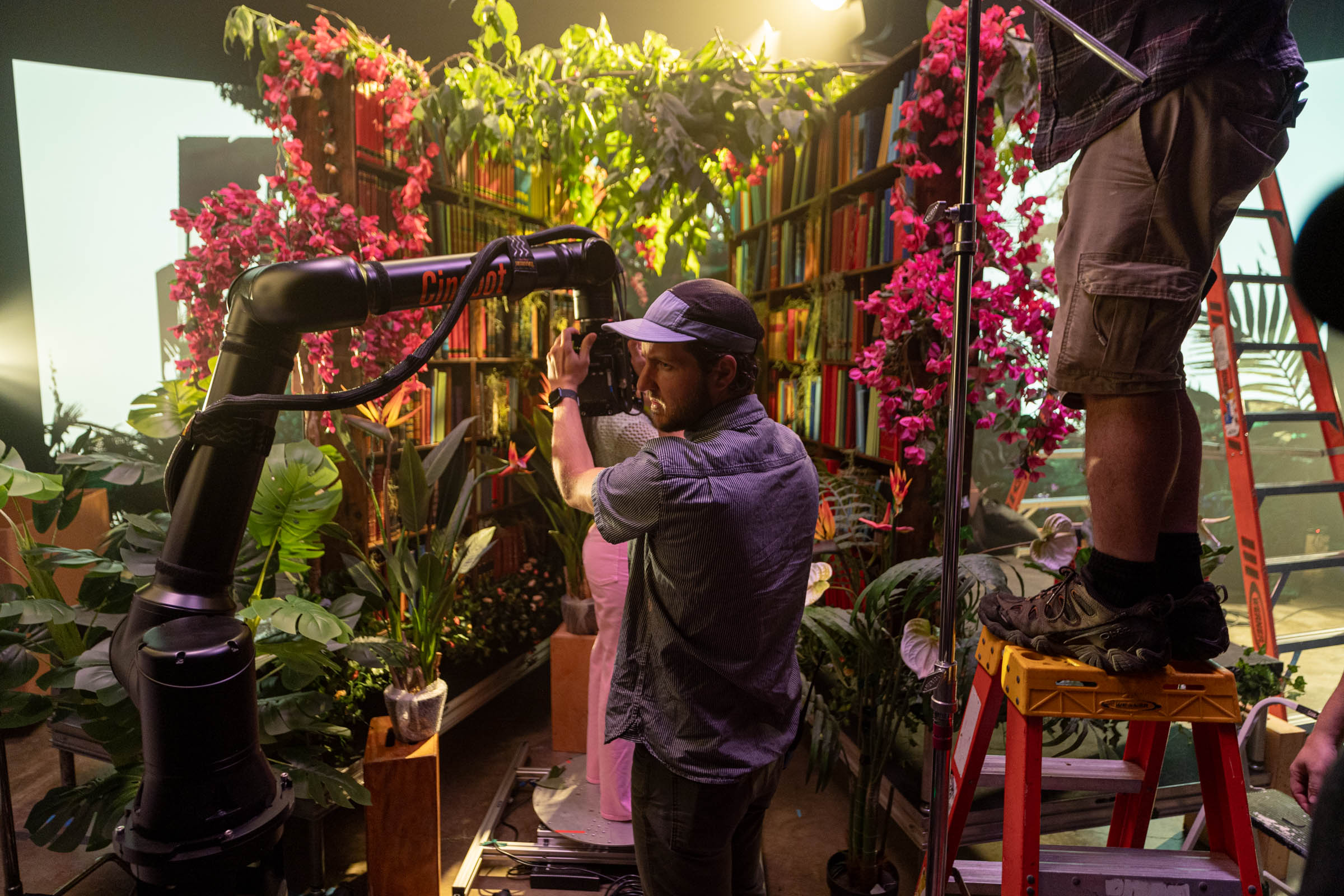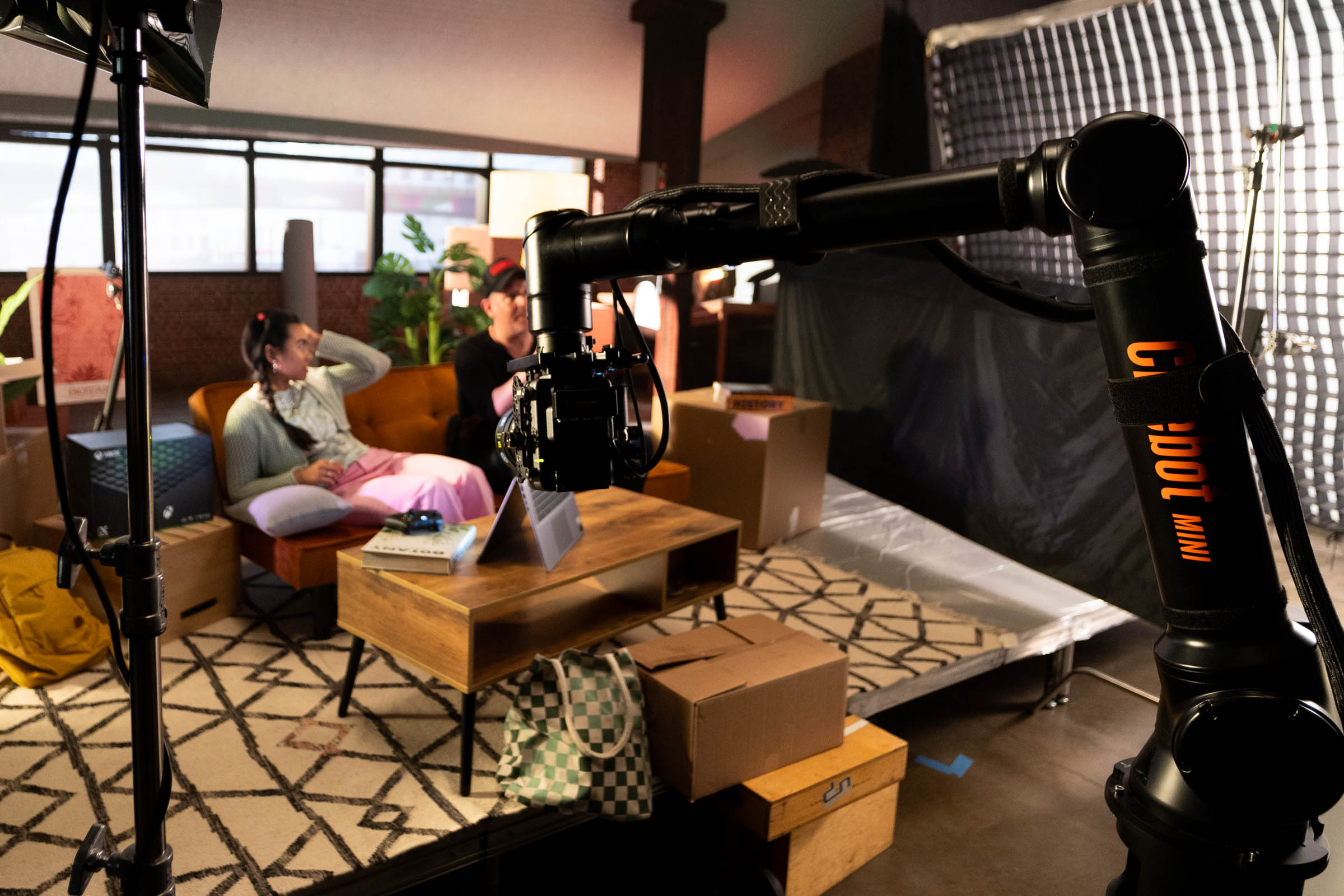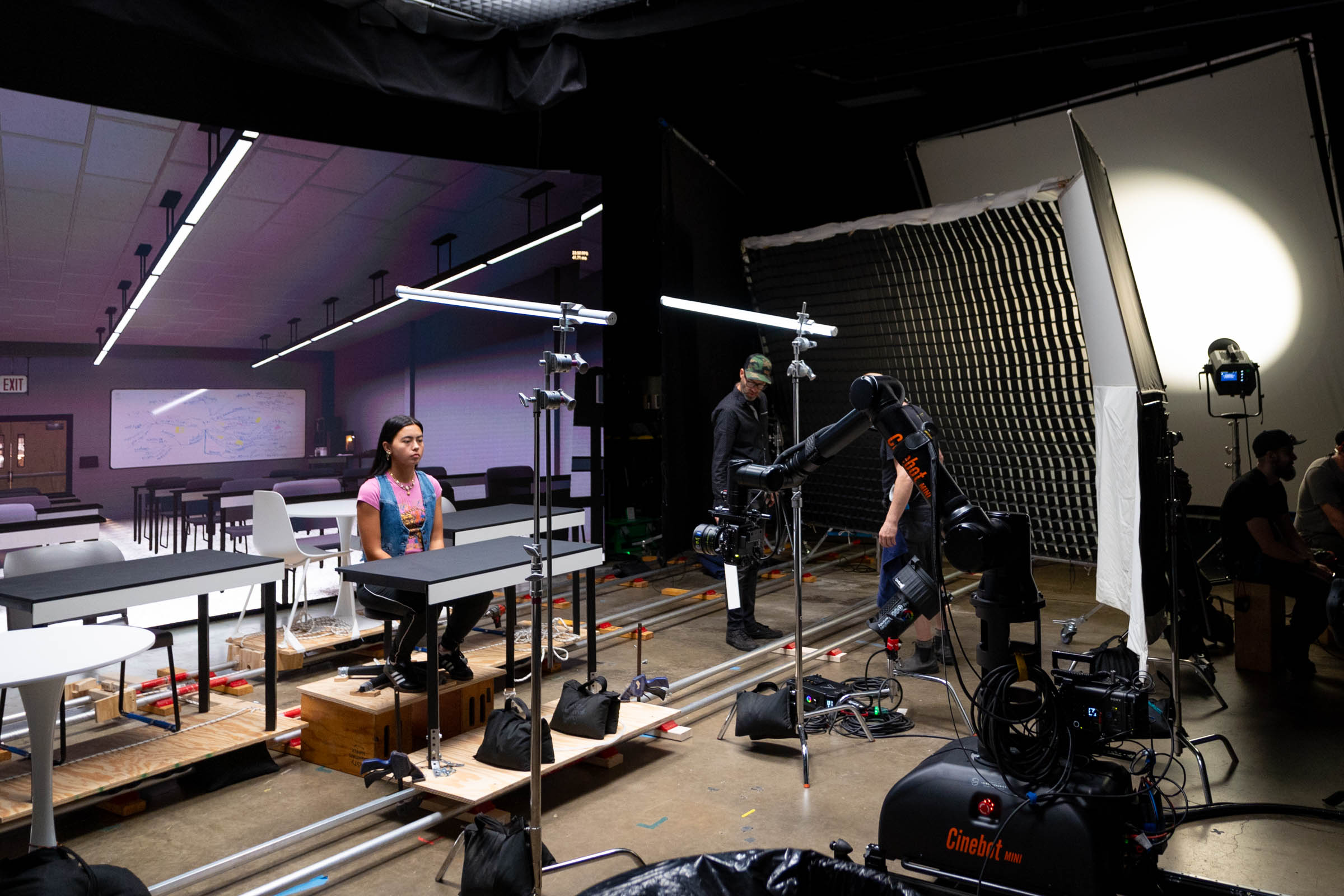The Cinebot Mini Goes Back To School
CASE STUDY
CineMechanics partnered with Drive-Thru Productions for Best Buy’s “Back to School” campaign, focusing on creating seamless transitions between LED volume and on-location shots while maintaining consistent framing across aspect ratios. To accomplish this, they put their new Cinebot Mini to the test, using it throughout the shoot to navigate the challenges of blending digital and practical environments into a ‘continuous’ shot.
CineMechanics partnered with Drive-Thru Productions for Best Buy’s “Back to School” campaign, focusing on creating seamless transitions between LED volume and on-location shots while maintaining consistent framing across aspect ratios. To accomplish this, they put their new Cinebot Mini to the test, using it throughout the shoot to navigate the challenges of blending digital and practical environments into a ‘continuous’ shot.
PROJECT OVERVIEW
Minneapolis-based film and video equipment rental house CineMechanics was recently approached by Drive-Thru Productions to help execute a “continuous” shot “Back to School” ad campaign for Best Buy. The goal was to deliver seamless camera transitions showcasing Best Buy’s essential products through various environments. These transitions required blending scenes shot on an LED volume wall with practical, location-based shots while maintaining consistent movement and framing across multiple aspect ratios.
The Cinebot Mini was selected for its ability to deliver frame-accurate camera movements, its flexibility in tight spaces, and its capability to handle complex VFX integrations in real-time. Additionally, the Cinebot Mini’s small size and lightweight design allowed it to easily move between the LED volume stage and various on-location shoots, using 20-amp standard power in front of the wall or operating on battery power on-location.

The Cinebot Mini was exactly what we needed for this project—lightweight, portable, and powerful. Its precision and ability to shoot in tight spaces made it an invaluable asset, particularly when transitioning between multiple locations and aspect ratios. Even though we had other robot options, the Cinebot Mini was the clear choice for balancing flexibility, budget, and creative needs.
CineMechanics
THE CHALLENGE
The continuous shot presented a series of technical and logistical challenges. One major issue was ensuring seamless transitions between on-location shots and scenes filmed in a virtual production environment using an LED volume wall. Maintaining consistent motion and fluidity across both practical and virtual elements was crucial, as the project involved multiple environments and required smooth integration of all shots during post-production.
Additionally, Best Buy required the content to be shot in three distinct aspect ratios—16:9, 9:16, and 1:1—simultaneously. This added complexity to the camera setups, necessitating precise framing for all formats in a single configuration without frequent adjustments. The need for continuous, uninterrupted motion across these different formats demanded frame-accurate precision to avoid misalignment that could compromise the final footage.
Another significant challenge was integrating the Cinebot Mini with the LED studio’s existing virtual production tracking system, which required the addition of certain advanced capabilities for such intricate and continuous motion control. This posed a risk of inaccuracies in tracking movements between the camera and the LED wall, potentially causing issues with parallax and synchronisation during camera transitions.
On top of this, specific product features being filmed in different environments posed additional hurdles. For instance, a sequence involving a reflective table caused an undesirable glare that altered the appearance of a silver laptop, creating an orange tint. This highlighted the need for precise control over camera movements to ensure visual accuracy for the VFX plate shots used throughout the shoot.

The data we got from the Cinebot Mini was so clean that we didn’t need to rely on any external motion trackers. The ability to frame all aspect ratios—16:9, 9:16, and 1:1—within the same setup was crucial to delivering what Best Buy needed. The Cinebot Mini made what could have been a logistical nightmare into a streamlined and efficient process.
Drive Thru Productions
The Solution
To seamlessly transition between on-location and virtual production shots, the Cinebot Mini’s lightweight design and ease of transport were indispensable. It allowed the team to move quickly between the LED volume stage and various locations, especially in tight spaces where larger systems would have struggled. The Cinebot Mini’s capability to run on battery power for up to 10 hours was a significant advantage during location shoots, eliminating the need for complex power setups and enabling the crew to simply use standard 20-amp house power on set.
The Cinebot Mini, paired with the Sony Venice 2 camera and Rialto, effectively met the requirement to shoot in multiple aspect ratios (16:9, 9:16, and 1:1) simultaneously. The precise motion control of the Cinebot Mini, combined with the camera’s open gate capability, allowed the team to capture all three aspect ratios in a single setup. This approach saved significant time and ensured that the client’s multi-format deliverables were consistent across every frame.
A critical solution involved integrating MRMC’s Advanced Virtual Production Sync Box to overcome the issues faced with the LED studio’s existing virtual production tracking system. The Sync Box facilitated a seamless connection between the Cinebot Mini, the LED wall, and the MRMC turntable, streaming FreeD data between these elements. This integration ensured perfect synchronisation between all variables, enabling smooth parallax effects and accurate camera movements, even during complex sequences involving multipass compositing.

Steve and the team at CineMechanics have been incredible partners for years, and when we saw the Cinebot Mini, we knew it was perfect for the Best Buy campaign. Its ability to work seamlessly with the LED volume wall via Bluetooth for parallax control was a major advantage. Jacob Watson, our Cinebot Tech, handled everything so smoothly, it’s hard to imagine doing another shoot without this tool.
Drive Thru Productions
The Cinebot Mini’s precision was also instrumental during the challenging shot with the reflective table and rotating laptop. When the initial shot resulted in unwanted orange reflections, the team did a VFX plate shot pass with a white card covering the reflective surface to remove the unwanted reflections in post-production. Thanks to the Cinebot Mini’s ability to repeat frame-accurate movements, the plate shot was seamlessly integrated with the original footage.
Flair 7 also played a crucial role throughout the project. Key features such as move scaling, SFX exports, and shot speed adjustments proved indispensable. Flair’s move simulation capabilities allowed the team to test and refine each camera move in a 3D environment before execution, ensuring flawless performance of complex shots involving multiple passes and effects.
Overall, the Cinebot Mini enabled CineMechanics to offer the right high-end motion control tools to Drive-Thru to achieve the seamless “continuous” shot required by Best Buy, effectively delivering all requested assets on time and within budget. Its precision and versatility were key in managing transitions between varied environments and aspect ratios, while its lightweight design and battery power capability allowed for smooth on-location shoots. The Mini’s ability to handle complex camera moves and integrate with virtual production setups ensured that each frame was perfectly aligned, exceeding the high standards of the client.

The Cinebot Mini’s portability was a game-changer for us. We could get shots in tight spaces that would have been impossible with larger systems. I was able to step in, adjust the camera with PushMoco, and get the framing just right before locking in the moves. Pairing it with the Venice 2 and Rialto was the perfect combination for this campaign. I’ll definitely be using the Cinebot Mini again on future shoots.
Freelance
CREDITS
Director
Patrick Pierson
DP
Alex Horner
CineBot Operator
Jacob Watson
Production Company
Drive Thru
Client
Best Buy
Camera House
CineMechanics
CineBot Service
CineMechanics
Producers
Beth Wilson, Mark Setterholm, Tom Lynch
